The Vine festival review: ‘Big Day Out Gold Coast’, January 2012
A festival review for The Vine. The full review appears below.
Big Day Out 2012
Gold Coast Parklands
Sunday 22 January 2012Twenty years into this festival’s existence and strangely, the Big Day Out has less cultural relevancy than ever before. Or so you might believe if you paid attention to the Australian music media in the months leading up to the 2012 event. Or the BDO Facebook page. There irate fans compiled a list: the line-up’s shit, all the acts are tired and stale, they booked The Living End for the 18th year in a row, they’ve been beaten to the punch by specialist festivals booking bigger and better acts, Kanye West isn’t a proper headliner – ad nauseum. No wonder festival co-founder Ken West got vocal with frustrations at such concerns.
So travelling to the Parklands today, I’m half expecting to spend the festival in a relatively empty venue. It’s a pleasant surprise to be completely wrong. This show isn’t sold out – none of the 2012 shows reached capacity, for the first time in a long time – yet it’s hard to discern much of a drop in attendance. Despite the vocal online haters, a summer in Australia without a Big Day Out to look forward to seems a sad prospect. This year’s tour needs to be excellent if the event is to survive, and it needs to start here on the Gold Coast.
Up first on the Orange Stage is Abbe May and her three offsiders, who play compact, elegant rock songs led by May’s strong voice and commanding stage presence. The Perth-based singer evokes memories of Magic Dirt’s Adalita Srsen in full-flight; boot resting on the foldback, guitar held aloft. There’s a lot to like here for rock fans, and she seems to impress a lot of newcomers today as her crowd slowly swells past triple figures. Next on the Green Stage are Stonefield, who’re running 15 minutes late due to transport issues. The four Findlay sisters are forced to swallow the embarrassment of soundchecking their own instruments before a nearly full tent. Once they start playing, though, they’re thoroughly impressive. This tour could mark the beginning of their transition into a band who deserve to be taken seriously: strong musicianship, quality songwriting and a formidable frontwoman in drummer Amy Findlay. They cover Zeppelin’s ‘Whole Lotta Love’ and it slays: the day’s first goosebump-provoking moment. Funnily, Holly – the band’s bassist, and youngest member at 13 – starts windmilling her hair during the drum solo, apropos of nothing. It’s awesome. The crowd goes wild.
On the Blue Stage, Parkway Drive outline the crossover appeal of their distinctive style of metalcore. By now, they’re essentially a mainstream act, so well-known is their image and presence. In ten years’ time, will we look back on these five Byron boys’ output as one of the defining Australian sounds? I hope so. These songs are etched onto the DNA of a generation of young hardcore fans, and they run through a solid set before a big crowd today. They’re a fine example of a band who clearly enjoy the hell out of their success; there’s nothing but smiles on show today. Singer Winston McCall struggles with the heat but keeps up with his incandescent bandmates; he even manages to catch two airborne water bottles during a single song, ‘Anasasis’. Five huge Parkway Drive-branded beach balls bounce around the D section for the duration of their set, which thoroughly satisfies.
The same can’t be said for OFWGKTA, the Los Angeles hip-hop collective. Today is the day that the Odd Future Wolf Gang Kill Them All bubble bursts. They sound like shit live. I wrote otherwise when they visited Australia for the first time last June, but today’s performance is truly horrendous. It’s not a matter of how the show’s mixed, either: the problem can be isolated to five dudes holding microphones and using them incessantly, rather than sparingly. Each line is barked by the rappers, not rapped. As a result, the sonic nuance that the group exhibit on record is non-existent today; instead, a hodge-podge of disparate, aggressive voices over a backbeat. The crowd at the Boiler Room is huge, and they explode with joy once the five rappers and one DJ – singer Frank Ocean nowhere to be seen, apparently – show their faces. After 15 minutes of watching and attempting to listen to their set, it becomes funny to think about how bad they sound. On record, impressive. Here? Appalling. At times it sounds like they’re just rapping over an mp3; during the Tyler, The Creator track ‘Transylvania’, the group’s original lines can be clearly heard underneath their live raps. 35 minutes in, ‘Yonkers’ could be the set’s only saviour, yet it too disappoints. Tyler barely raps a word; the crowd does it for him. When he does use the mic, he’s drowned out by his bandmates barking his best lines. In a short, it’s a bomb. Which ruins the last chance that this set had of redeeming itself. The crowd leaves en masse at song’s end and I wonder why I’m still standing here.
Before the Orange Stage, Australian hip-hop heroes Hilltop Hoods are welcomed by a huge crowd. Featuring live keyboards and drums (the latter via Plutonic Lab, half of the duo Muph & Plutonic), DJ Debris and the two MCs stoke excitement in the crowd. I take it in while standing nearby the free Slurpee tent and admiring the extraordinary amount of waste caused by thousands of straws, cups and straw wrappers. The Hoods’ new stuff is not particularly remarkable – one chorus consists of “I’m no good” over and over – and when they threaten to play more, I shoot through. It’s been a disappointing couple of hours. I need to see something inspiring.
Norwegian electronic act Royksopp fills that gap perfectly. Their hour-long set at the Boiler Room is commanding: it’s their first time in the country, and they’ve evidently brought a trunk full of props to mark the occasion. Flanked by a guitarist and bassist clad in capes and face-masks, the core duo of Svein Berge and Torbjørn Brundtland adorn themselves with a range of costumes and enormous light-emitting helmets (a la Deadmaus, Daft Punk) as they work through tracks from their four albums. From the opener, ‘Alpha Male’, the quartet is outstanding: the sound booms loud and clear, and they’re met with a tent full of dancing bodies. After ‘Happy Up Here’, ‘Eple’ and ‘Remind Me’, an unintroduced blonde female singer emerges and faithfully reprises Robyn’s vocal part during ‘Girl And The Robot’, while acting alongside one of the duo (wearing a huge robot helmet with red and green lights, natch). She reappears for a slowed-down version of ‘What Else Is There?’, an achingly beautiful track from 2005’s The Understanding that was originally sung by The Knife’s Karin Dreijer Andersson. Incredibly, the singer captures Karin’s idiosyncratic vocal style in whole, while wearing a Knife-inspired bird mask. They air ‘Poor Leno’ then discover that they’ve got time for one more, so the girl reappears to again reprise the role of Karin for ‘This Must Be It’. It’s hard to imagine walking away disappointed from the Boiler Room after Royksopp: intense, compelling and not boring for even a second, it’s the best set I’ll witness today.
It begins to rain during Battles’ set under the tent at the Essential Stage. The New York City-based quartet became a trio last year; having them seen them dominate with four members, I’m interested to see whether the same is still true with one fewer musician. The answer is ‘mostly yes’. There’s an incredible amount of tension during the first few minutes of ‘Africastle’, before John Stanier starts drumming. Ian Williams and Dave Konopka wind their way through snaking guitar lines and teasing keyboard phrases that build up to Stanier’s first drumbeats. His kit has been mic’d incredibly well: the snare is so punchy that it sounds like a whipcrack each time he smacks it. Stanier is a demon behind the kit, and he pulls focus throughout their 50 minute set. To compensate for the lack of vocalists, they’ve wedged two LCD screens on either side of the kit, which display HD footage of Kazu Makino (‘Sweetie & Shag’), Matias Aguayo (‘Ice Cream’) and Gary Numan (‘My Machines’) singing along to the songs. (A huge, high definition Gary Numan glaring at you for a few minutes is quite an imposing sight.) The trio have worked out how to do tracks from their debut album, Mirrored, without singer/guitarist Tyondai Braxton; they play a sample of a children’s choir singing the nonsensical lyrical hooks of ‘Atlas’, and it works well despite a couple of miscues from Williams. That track is excellent today; so too ‘Tonto’ from the same album, though it’s a curtailed version. Things fall apart during ‘Wall Street’ midway through the set, though: one of Williams’ keyboards fails, and Stainer and Konopka spend a few minutes in a holding pattern, playing the same short phrase, before eventually ending the track. Frustration abounds on stage; such is the lot of a band so reliant on technology and carefully daisy-chained connections to make their music. They never quite regain their momentum after this technical problem, so it remains a good set, but not a great one.
The rain has ruined the potential to witness Tony Hawk skateboarding on the vert ramp near the main stages. Despite the efforts of a crew who optimistically mop up the wet while the legend walks around the halfpipe, posing for photos, his intended 6.30pm start has been thrown way out. Still, a crowd of hundreds hang around, hoping to witness the man in full flight; the sport’s only true ‘rock star’. A drunk guy near me yells, “Skate or die, Tony!”. Hours later, while standing inside the D barrier, I look over my shoulder and see dozens of skaters lining the top of the ramp while a single figure cuts a path inside. Perhaps the Birdman finally flew, some two hours after his scheduled time. On the Blue Stage, British act Kasabian are performing, but not inspiring. They’re being watched by a few thousand people but they’re decidedly vanilla. It’s only for the closing pair, ‘Vlad The Impaler’ and ‘Fire’ – the latter custom-made for licensing to late night sports shows, it seems – that they raise the bar slightly.
Two acts to go. On the Orange Stage, Seattle grunge act Soundgarden sound really fucking good, and all four of them are all the way into it. This isn’t a half-arsed reformation. The worst thing that a reformed band can do is either perform without heart (The Pixies, I’m looking at you) or fail to match their on-record sound. Soundgarden pass both of these tests, and ensure that no-one’s fond memories are tarnished tonight. The opening trio (‘Searching With My Good Eye Closed’, ‘Spoonman’ and ‘Let Me Drown’) is impressive, and from here the band only get better. Rain begins bucketing down, and sticks around for a few songs. ‘Jesus Christ Pose’, ‘Loud Love’ and ‘My Wave’ are highlights, so too singer Chris Cornell’s stage banter. “Steal all the records!” he says after telling us about the band’s intention to release a new album this year. “You might as well, otherwise you’ll have to hear them on a CD, which sounds like shit anyway.” While they play, a dude is bucketing water off the top of the side-of-stage sound tent, directly down onto the stage area between Orange and Blue. It doesn’t seem like a particularly smart or safe decision. Cornell makes a weird announcement toward the end of their 75 minute set: “This is the last Big Day Out ever. I mean, right now. Get out!” he yells. Nobody knows how to react. “Not really,” he clarifies soon afterwards. “Maybe they’ll do it again next year. I don’t know.”
During Soundgarden’s set, the Blue Stage has become an all-white affair for the headliner. Several stagehands are prowling the stage, very carefully observing the speakers at the front of stage. The same men are still doing this ten minutes after Kanye West was due on stage. Like there aren’t tens of thousands of people watching and waiting. A pretty funny situation, at first. 16 minutes late. and the men are pointing at a spot near the front of stage. (I bet they wish they brought a big black curtain with them, like Rammstein did last year, so we couldn’t see what they were doing.) This is excruciating and embarrassing. And nobody’s talking to the audience, telling us why we’re waiting. The Chemical Brothers’ 1997 album Dig Your Own Hole is playing over the PA. The stage manager keeps testing the wireless mic across the length of the stage, before the foldback speakers. He doesn’t look pleased. Backstage, the entire crew must be tearing their hair out. The headliner is 20 minutes late.
At this point the D barrier opens up again – presumably due to punters attempting to find musical entertainment elsewhere – so I venture back inside. Stagehands are scuttling across the front of stage, running cords, replacing and reconnecting foldback speakers at the insistence of the stage manager. I keep thinking to myself: Kanye’s going to cancel, and shit is going to hit the fan. 9pm comes around; the headliner is half an hour late, and still nobody is communicating anything to the audience. Dig Your Own Hole plays on (good album, that). Bottles are being thrown. Stagehands dart out to retrieve the missiles. The stage manager looks ready to strangle someone. What a fucking nightmare. Someone is losing their job over this shit. Many people, perhaps.
After 35 minutes, the crowd starts a “bullshit” chant which is quickly adopted by thousands. Sensing a near-riot on his hands, one of the stagehands grabs a microphone and belatedly explains, “The rain fucked with a lot of things. One minute wait for Kanye,” he promises, holding up his index finger. The crowd begins counting down from 60. It seems like a very Australian thing to do. I smile at this, and at the stupidity of the sound guy for promising something that clearly won’t be fulfilled. Around 30 seconds after that minute has passed, Kanye arrives! Clad in a white suit! Except it’s not him, it’s his DJ. Who stands behind his decks and laptop for a while, studying his fingernails, saying nothing. A few minutes later he steps down from his podium and retreats backstage again. It’s been 41 minutes since the headliner was due. Again, no communication. Lots of boos; people leaving; more missiles.
After 43 minutes, a crew of people is led through the photo pit in front of the Orange Stage, including what appears to be a couple of members of Odd Future. Right on 9.15pm – 45 minutes late – the show starts. Operatic vocals are broadcast through the PA at enormous volume. Dozens of skinny female ballet dancers flood onto the red-lit stage. The music is from ‘H.A.M.’, a track from Kanye and Jay-Z’s Watch The Throne. Then the vocal sample from the beginning of ‘Dark Fantasy’ is broadcast. The rapper isn’t on stage. People begin to look over their shoulders, searching for the man. A scissor lift clothed in black fabric has been erected directly in line with the stage that Soundgarden began performing on two hours ago. A spotlight is flicked onto the top of the lift, where Kanye stands, mic in hand, telling us to get our hands in the air. The beat drops. The crowd goes bananas. In an instant, we’re all transformed from pissed and impatient to ebullient. It’s a showman’s entrance, and it totally rules. Kanye, how can we stay mad at you?
I’m in line with the scissor lift and I study the dozen security guards stationed at its base, and the two enormous black men who are evidently the rapper’s bodyguards. As ‘Dark Fantasy’ winds down, it becomes apparent that he’s going to have to walk through the Orange Stage side of the D barrier to rejoin the Blue Stage. The crowd realises, a few beats too late, that they have a chance of mobbing their hero. As the scissor lift descends, a few dozen fans tentatively move toward the star. The security bristles, forming a guard of honour as moments later, hundreds of fans – mostly young girls – flood toward the star, who steps onto the grass and begins dodging trash in his probably-expensive shoes. Kanye does not run, of course. He strides confidently, face impassive, flanked by strong men; he rounds the corner of the photo pit and deals out the occasional high-five to fans crowding the front barrier. Kanye, you glorious bastard! Even having seen a much more impressive version of this entrance at Splendour In The Grass 2011 – the star atop a ten-metre high, smoke-clad tower – it’s still an incredible sight; suspense, misdirection, surprise and joy, all within a couple of minutes, while ‘Dark Fantasy’ plays in the background. Given the ridiculous 45 minute wait and how quickly the crowd’s emotions were turned, I’m convinced that this is one of the funniest, most brilliant things I’ve ever seen. (I also love the idea of a random tradesman using that same scissor lift for a routine job tomorrow, completely unaware that it was used to hoist one of the world’s biggest rappers over the heads of tens of thousands of fans the night before.)
From here, the set treads a well-worn path: it’s much the same one that he’s been doing since Coachella last year, and the very same set that 30,000 people saw at Splendour 2011. But it makes sense that he’s touring it again on the Big Day Out, to ensure it’s seen by a wide Australian audience before he retires it and starts afresh for the next album cycle. Six songs in, after a curtailed version of ‘Monster’, the rapper apologises for his late start. The crowd cheers. He explains: “Water got in the [front of house sound] boards, and fucked up the whole system. I don’t have in-ears [monitors], so I can’t even hear myself. But I’m sure the newspapers won’t run that tomorrow, because they always find other shit to write about me.” (He was right, of course).
Note: Here’s the shit thing about the entire situation: it wasn’t Kanye’s fault that he was late on stage, but the entire crowd probably assumed it was. Yet nobody from the stage crew – or even his manager, or DJ – addressed the crowd at any point to inform us of the real reason: technical failure caused by the rain. (Which raises many, many more questions of the organisers. Here’s a few to begin: why was this allowed to happen? Why weren’t the foldback speakers covered at the first sight of rain? Why did they allow tens of thousands of dollars of equipment to be (likely) destroyed by water? Haven’t they been doing festivals at this same venue since 1994? Why did it take 35 minutes for someone to accept responsibility for communicating to the crowd?) And so his reputation will suffer in Australia, and none of it will have been his fault.
Once the set’s underway, very little goes wrong for the headliner. The ballet dancers are particularly impressive during ‘Love Lockdown’; that aside, the 808s and Heartbreak bracket is still a yawn-fest, and the crowd leaves in droves. He messes up the lyrics in ‘All Falls Down’, despite earlier saying that it’s one of his “absolute favourites”, and immediately has his DJ start it again. He does a cool little a cappella verse and chorus during ‘Touch The Sky’. He restarts ‘All Of The Lights’ because we don’t respond to his line “MJ gone” with the required “Our nigga dead!” at an appropriate volume. “I want you to remember this moment for the rest of your lives!” he commands as the track starts up again. Indeed.
His take on ‘Runaway’ near set’s end is excruciatingly long. During an extended outro, the rapper ruminates on his heartbreak, his regrets, how “assholes deserve to be lonely” and how if we love somebody tonight, we should hold them tight. This goes on for what seems like ten minutes, while a sole dancer runs through an improvised routine at his feet, twirling and stretching while he drags the song out way longer than expected. The set ends with ‘Hey Mama’ at 11.08pm, nearly two hours after he began. In an apparent effort to redeem himself for the late start, he’s far surpassed his allotted 90 minutes. Kanye, his band, and his dancers take a group bow and leave the stage. While it hasn’t been the best ever Big Day Out, it’s certainly among the most memorable. Til next year. Hopefully.
For the archived version of the review and many more photos, visit The Vine. Above photo credit: Justin Edwards.
 One year ago, acclaimed American hip-hop artist Dante Smith – stage name Mos Def (pictured right) – was set to tour Australia for the first time. Eleven shows were booked, including headline festival appearances at Soundscape in Hobart and The Hot Barbeque in Melbourne. After failing to appear at his first scheduled performance in Adelaide, he went on to randomly skip four shows of the itinerary. Such was the ensuing confusion, that following the postponements, cancellations and sternly-worded press releases from the promoter, Peace Music, became something of a sport here at TheVine. For background, revisit our news story
One year ago, acclaimed American hip-hop artist Dante Smith – stage name Mos Def (pictured right) – was set to tour Australia for the first time. Eleven shows were booked, including headline festival appearances at Soundscape in Hobart and The Hot Barbeque in Melbourne. After failing to appear at his first scheduled performance in Adelaide, he went on to randomly skip four shows of the itinerary. Such was the ensuing confusion, that following the postponements, cancellations and sternly-worded press releases from the promoter, Peace Music, became something of a sport here at TheVine. For background, revisit our news story 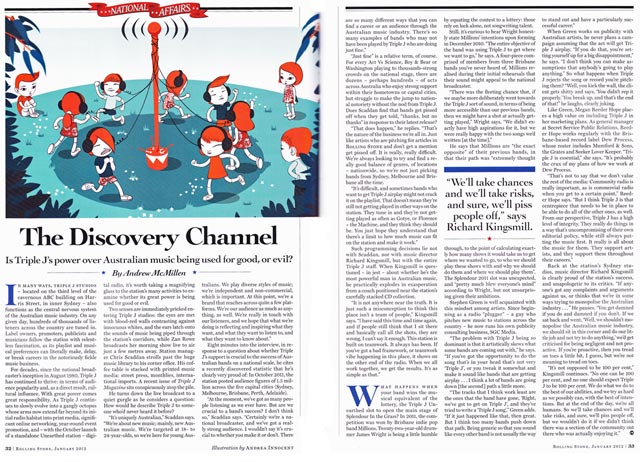
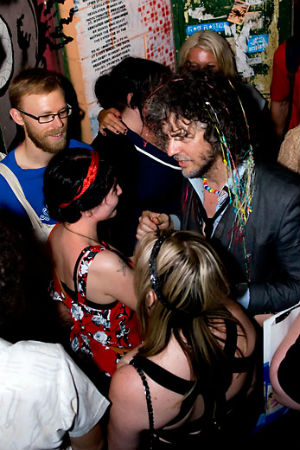 “There’s a lot of things where, when you think about them, you think they could work. But it’s different when you do them.” Wayne Coyne, singer and songwriter of The Flaming Lips, is sitting before a microphone at Brisbane community radio station 4ZZZ. It’s 12.50am. Four hours earlier, Coyne and his band headlined the Windmill Stage at Harvest Festival. Now, at Triple Zed, he’s here to lead something that’s never been done before: an attempt to simultaneously play all four albums of the Lips’ 1997 album, Zaireeka, live on the radio, in sync, via 160 iPhones split into four groups of 40 fans.
“There’s a lot of things where, when you think about them, you think they could work. But it’s different when you do them.” Wayne Coyne, singer and songwriter of The Flaming Lips, is sitting before a microphone at Brisbane community radio station 4ZZZ. It’s 12.50am. Four hours earlier, Coyne and his band headlined the Windmill Stage at Harvest Festival. Now, at Triple Zed, he’s here to lead something that’s never been done before: an attempt to simultaneously play all four albums of the Lips’ 1997 album, Zaireeka, live on the radio, in sync, via 160 iPhones split into four groups of 40 fans. Eventually the message filters through that Zaireeka’s first track, ‘Okay I’ll Admit That I Really Don’t Understand’, is to be scheduled as an alarm for 1.43am. This time it works – mostly. Armstrong leads Coyne out of the booth to tour the four groups, who titter nervously as the singer graces them with his presence. As he descends from the top floor to the car park via the back staircase, he remarks, “Wow, this is a big station.” Armstrong takes the mic again after the song ends – 2 minutes and 51 seconds later – to announce the experiment as a success. The group in the car park cheer, and congratulate themselves. And then the night takes a turn for the weird.
Eventually the message filters through that Zaireeka’s first track, ‘Okay I’ll Admit That I Really Don’t Understand’, is to be scheduled as an alarm for 1.43am. This time it works – mostly. Armstrong leads Coyne out of the booth to tour the four groups, who titter nervously as the singer graces them with his presence. As he descends from the top floor to the car park via the back staircase, he remarks, “Wow, this is a big station.” Armstrong takes the mic again after the song ends – 2 minutes and 51 seconds later – to announce the experiment as a success. The group in the car park cheer, and congratulate themselves. And then the night takes a turn for the weird.

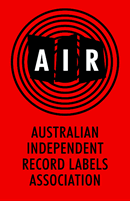

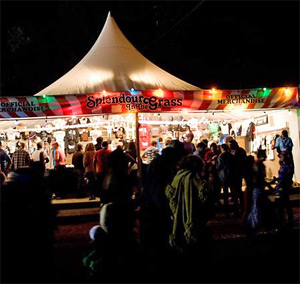 Report: Splendour 2011 Day 1
Report: Splendour 2011 Day 1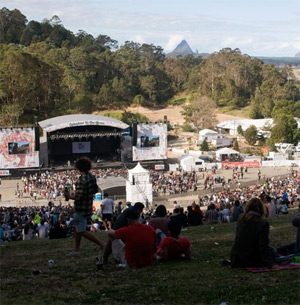 Report: Splendour 2011 Day 2
Report: Splendour 2011 Day 2 Report: Splendour 2011 Day 3
Report: Splendour 2011 Day 3